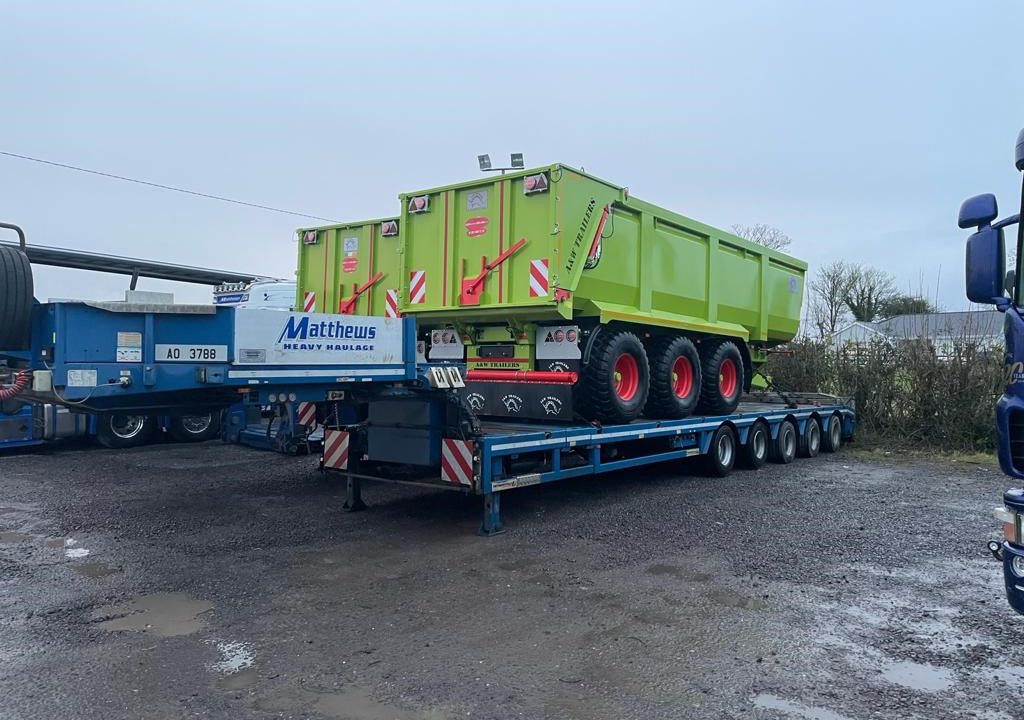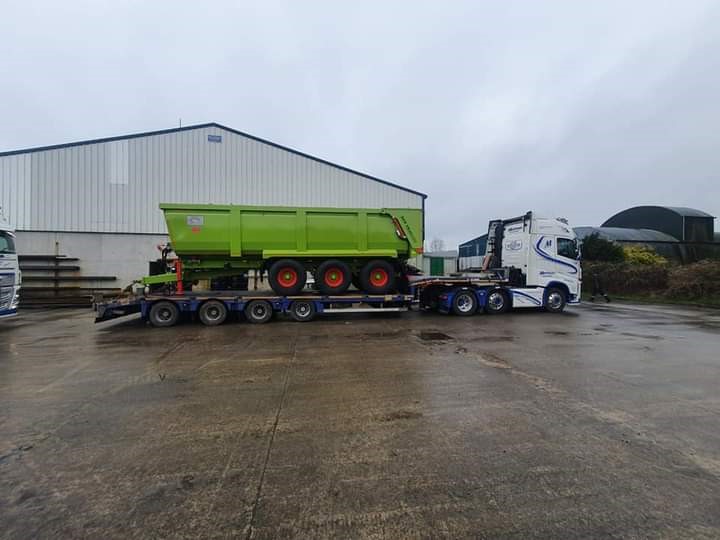Two 26ft silage trailers are set to embark on a remarkable 17,000km journey from Agri Machinery Ireland in Co. Meath, to their new owners in Australia.
The trailers were built by A&W Engineering in Co. Carlow as a 26ft grain and silage trailer.
The trailer was based on a tri-axle platform and comes with a rear steering axle to aid maneuverability.
At the front of the trailer, a hydraulic opener is also fitted to aid loading and the trailer is also equipped with dynamic weight cells.
There is no need to tip the trailer up for this process so when the body of the trailer is down, the dynamic weight of the cargo can be accessed very easily.
Tyre options
Moving down to the side of the trailer, the trailer comes as standard with 560/60 R22.5 tyres, but other options are available.
Bolt-on mudguards are also fitted for protection as standard, along with mounted flashing orange lights, with the rear axle of the three being the one that does the steering.
Moving to the rear of the trailer, like the front, the rear tailgate is controlled by hydraulics and features load cells at the rear, similar to those equipped on the front of the trailer.
The hinge pins are fitted with an auto-greaser which gives added peace of mind to the operator and reduces potential maintenance time.
In-cab controls
Once hooked up, the operator will be able to control tipping the trailer by using the standard spool feature.
Two stability rams can also be turned on or off to aid stability when tipping a load out.
The trailer load weight is shown on a separate display and gives a dynamic weight reading, meaning the operator will always have the true weight of their load available at all times.
Stability design
A strong drawbar and hydraulic ram allow the trailer to achieve an excellent tipping angle without any danger of becoming unstable.
This also gives access to the rear-mounted stability rams which the operator can choose to use for further peace of mind, if needed.
Further load cells are located in the middle of the trailer, meaning that there are two load cells located at the front, middle and back which give a balanced weight reading.
These trailers have generated interest all around the world and they are a credit to the engineering skill shown by Irish trailer manufactures and it is therefore no surprise to see two examples sent to be put to work in Australia.



